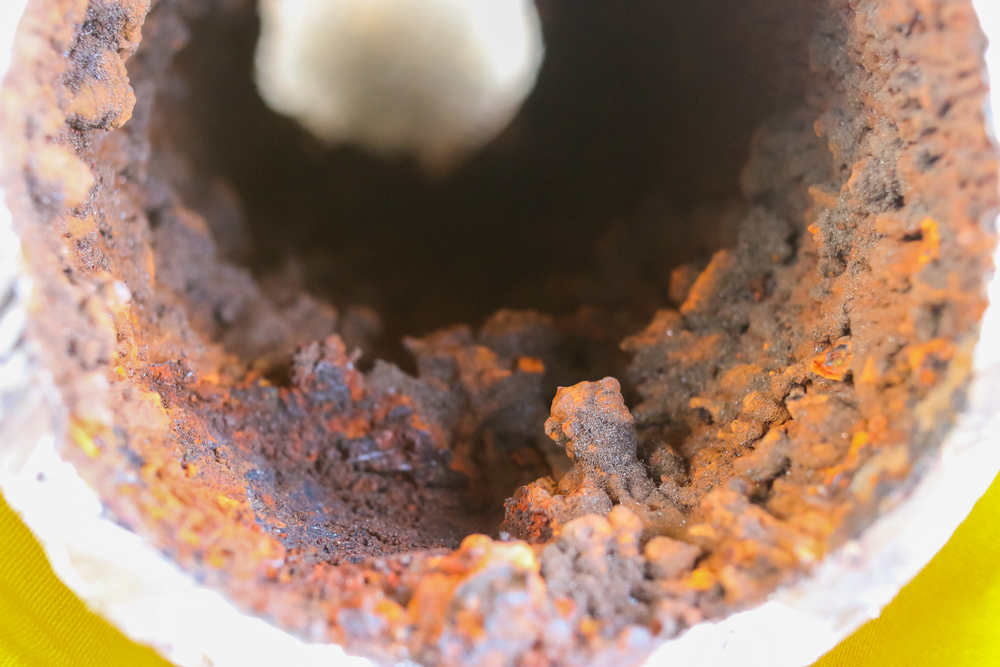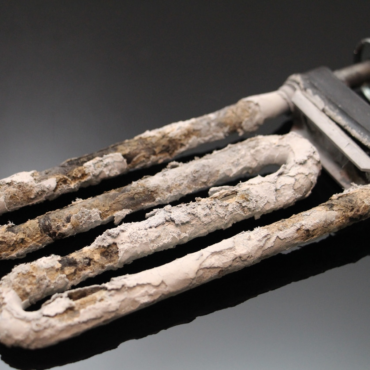Hydronic heating systems offer efficient and comfortable heating for large spaces, but require regular maintenance for longevity. It’s crucial to maintain the correct pH level in the water to prevent buildup of minerals or acidic conditions that can damage the system’s components and piping, leading to reduced performance or system failure.
What is pH, and what should the level be in a hydronic heating system?
Historically denoting “potential of hydrogen,” pH indicates how acidic or basic the water inside a hydronic heating system is. According to usgs.gov, the universal reading for pH goes from 0-14, with 7 being neutral. Less than 7 indicates acidity; greater than 7 indicates a base.
- Examples of items that have a pH of less than 7 are black coffee (pH=5), grapefruit juice, soda, or tomato juice (2.5-3.5) and lemon juice or vinegar (2).
- Examples of items that have a pH of greater than 7 would be seawater (8), baking soda (9.5), ammonia solution (10.5-11.5) and liquid drain cleaner (14).
pH is an important indicator that water is changing chemically. Hydronic systems need to maintain a perfect pH level balance; A pH that goes too high or too low can drastically impact a system.
The correct level will depend on the metallic composition of the heat exchanger. Some recommended pH levels range from 8 to 8.5. Systems with a cast iron, stainless steel or copper exchanger are resilient and usually have a wide range of acceptable levels. Aluminum is more prone to corrosion and may require a specific pH.
It is recommended to check the system’s installation and operation manual to determine the acceptable pH range.
Tips for testing pH level in hydronic heating systems
To test the PH level of a hydronic heating system, start by doing a visual reading. Open the drain valve and bleed off some liquid. If it appears clear, proceed with a pH test.
Most pH test strips can simultaneously check both the level of freeze protection (propylene glycol) and the level of corrosion protection in a system. If a more precise reading for an aluminum system is needed, use a digital pH meter.
If the pH levels are too high, scale or limescale will buildup in the system over time. Too much mineral buildup will restrict the system’s water flow. Essentially, the effectiveness of the system is lessened. If the pH levels are too low, the water has turned acidic. This leads to rust and corrosion — a serious problem since boilers are typically made of copper, cast iron and aluminum. As mentioned earlier, enough corrosion can stop system operation altogether.
How to adjust pH level in hydronic heating systems
If the test strips or digital meter indicates the pH level is off, follow these steps:
- Drain about a gallon of liquid from the boiler and dispose of it
- Fill a container with a quart of corrosion inhibitor and three quarts of fresh water (or follow manufacturer instructions)
- Pump this solution into the system and allow it to circulate for about half an hour
- Test again. Usually, a single dose of inhibitor does the job. But if the reading is still too low, repeat the process.
A corrosion inhibitor will help balance out the pH. But if the buildup or corrosion has been going on for several years, the system will probably not recover with this treatment. Instead, use a system cleaner to flush the system to maximize boiler efficiency.
System cleaners are formulated to clean and condition both steam and hot-water hydronic systems by removing rust, scale and sludge. Look for a cleaner that can also free and lubricate zone valves and help stop priming and foaming with a special anti-foam agent. Ultimately, it should be a liquid cleaner and corrosion-prevention treatment.
A system restorer and noise reducer is another option for maintaining a hydronic heating system. More aggressive than a system cleaner, it also cleans and reduces bubbling and banging, while restoring system efficiency. This type of product can be paired with a corrosion inhibitor for annual heating system maintenance checks.
Hydronic heating systems are closed, so there are usually no external signs of corrosion. That makes it difficult to spot an equipment leak — unless, of course, water is visibly running onto the floor. If so, corrosive water inside the boiler is a likely cause.
This general lack of immediate visibility is why testing hydronic systems annually is vital. If a locale has hard water or other conditions that cause the water to be more acidic, testing should be done twice a year.
The lack of visibility is also why sampling the water, as described above, is a must. It is the best way to tell if anything is wrong. If rust or sludge appears in the sample, test and replace the water.
Ultimately, testing the pH of boiler systems maximizes efficiency; a variety of products are available on the market that can make monitoring pH levels simple and easy. If this testing uncovers damage to the system, there are also ways to alleviate and fix that damage.
Sean Comerford is manager of inside sales and tech support at Oatey Co.
Whether you require installation, repair, or maintenance, our technicians will assist you with top-quality service at any time of the day or night. Take comfort in knowing your indoor air quality is the best it can be with MOE heating & cooling services Ontario's solution for heating, air conditioning, and ventilation that’s cooler than the rest.
Contact us to schedule a visit. Our qualified team of technicians, are always ready to help you and guide you for heating and cooling issues. Weather you want to replace an old furnace or install a brand new air conditioner, we are here to help you. Our main office is at Kitchener but we can service most of Ontario's cities
Source link




Add Comment